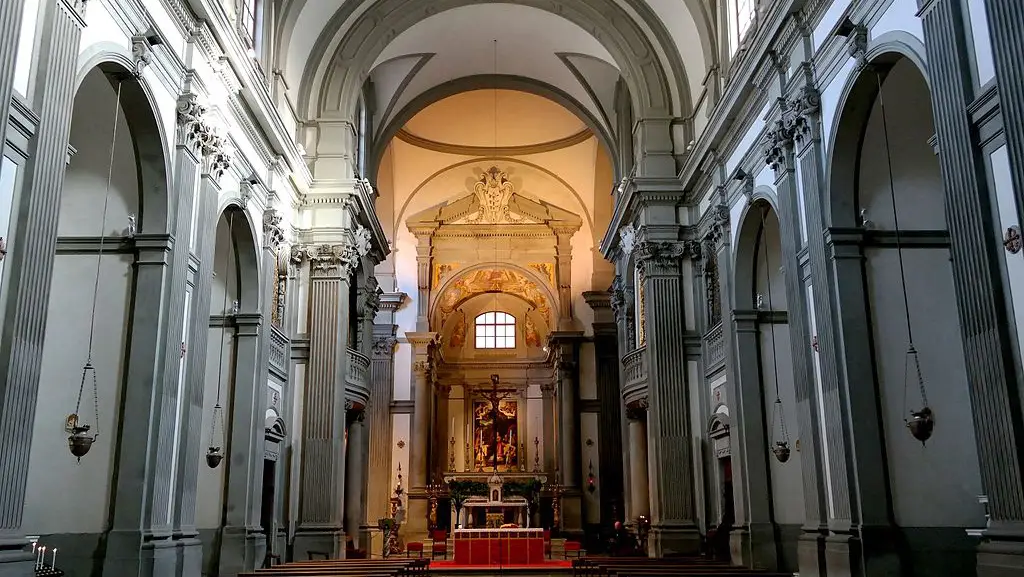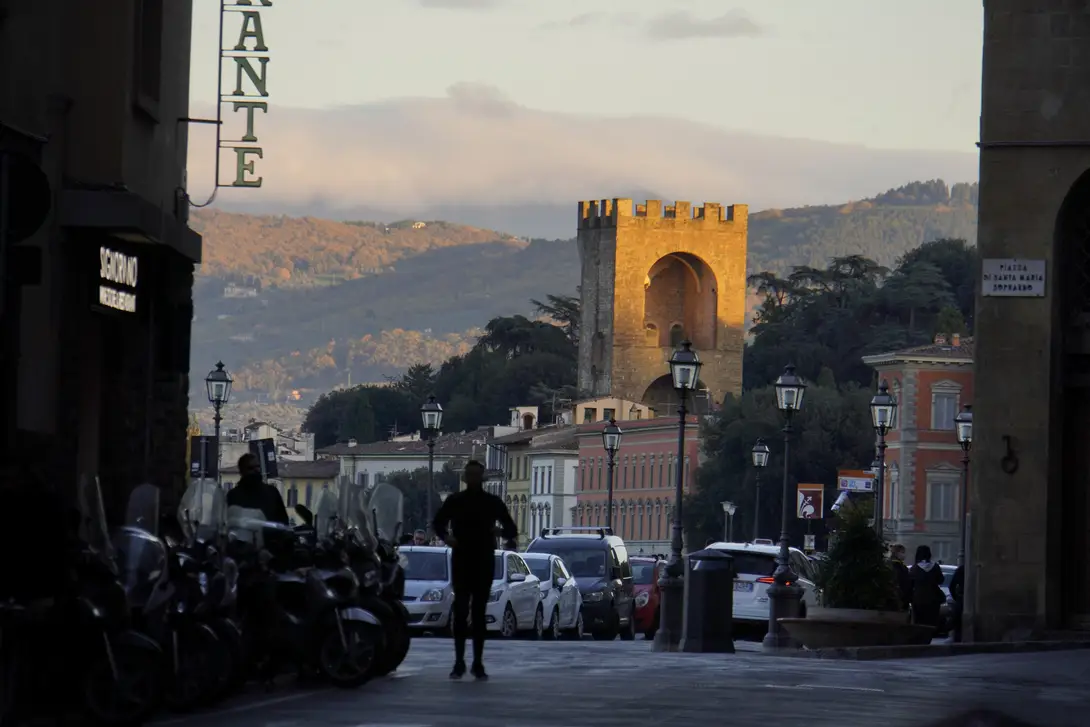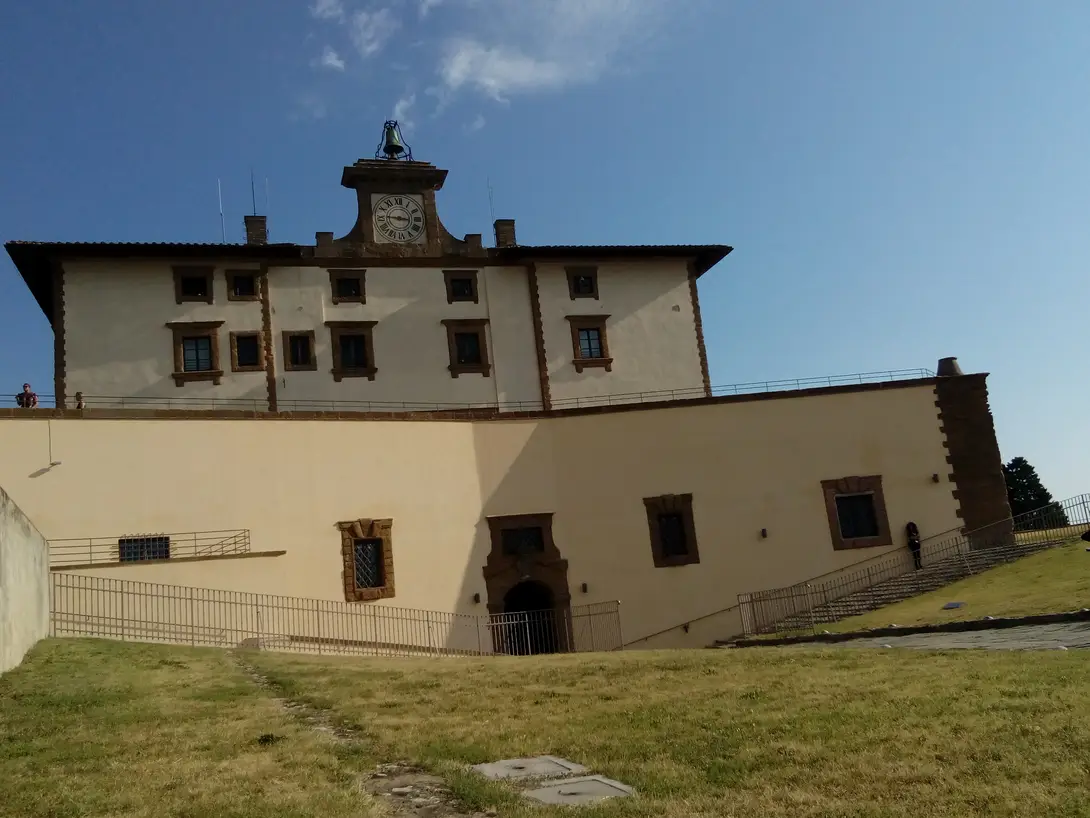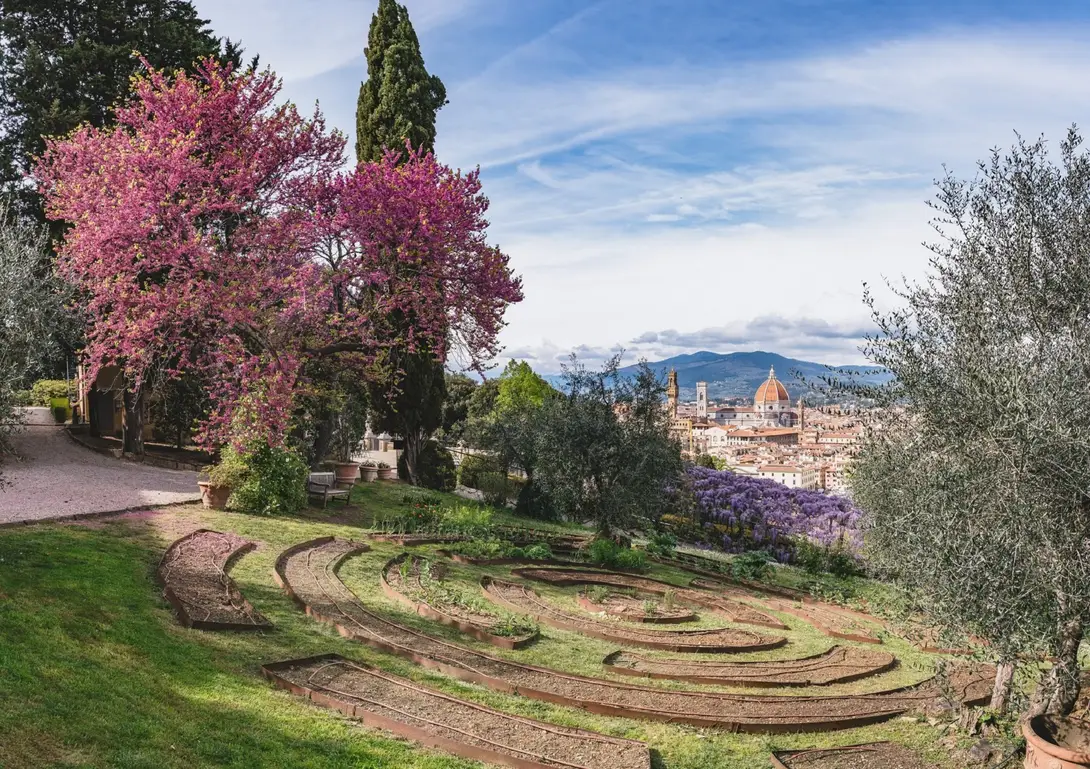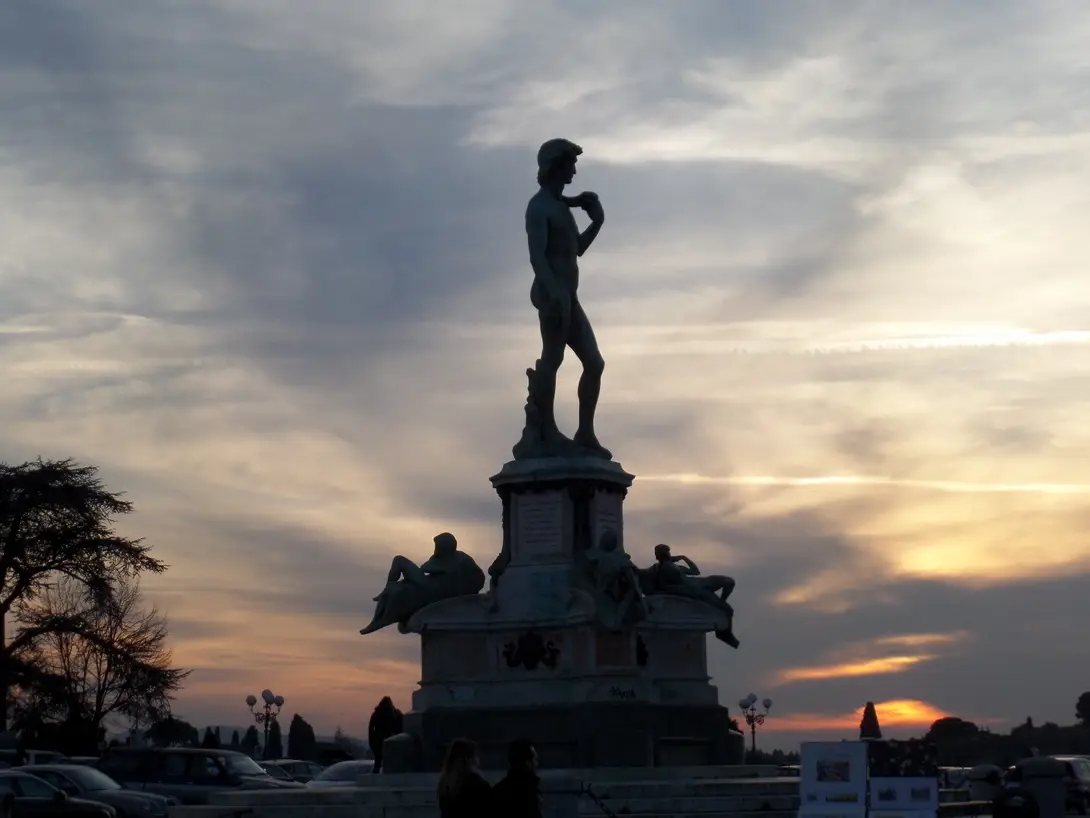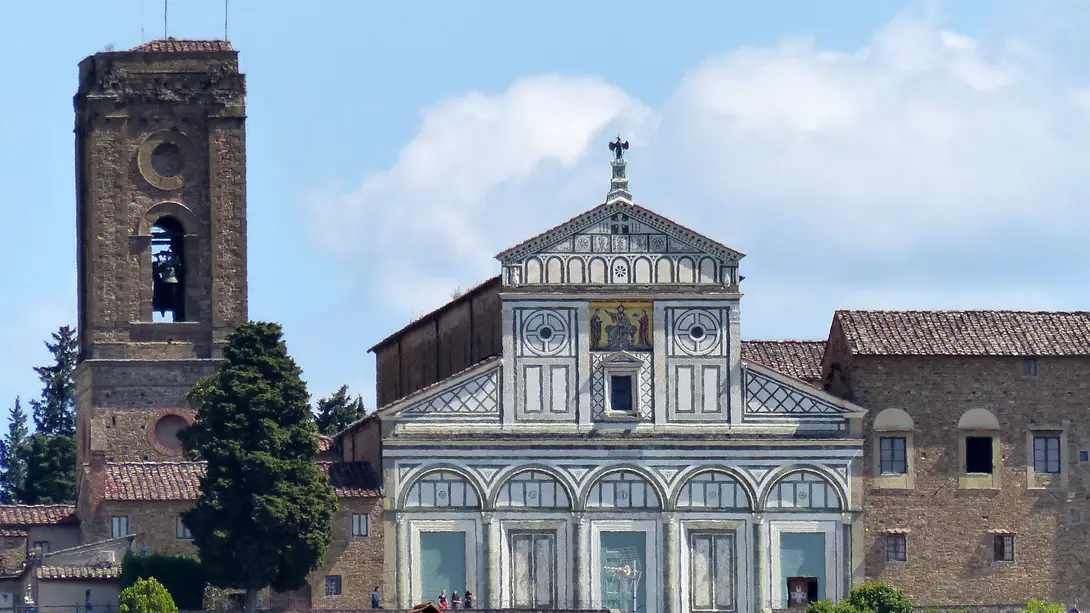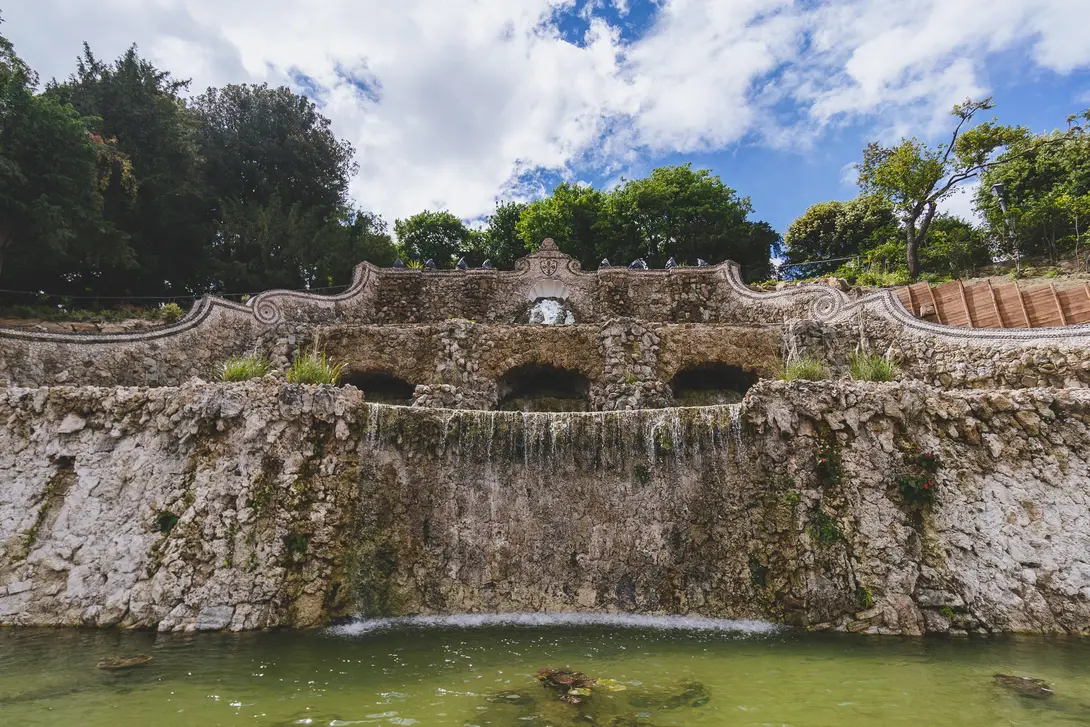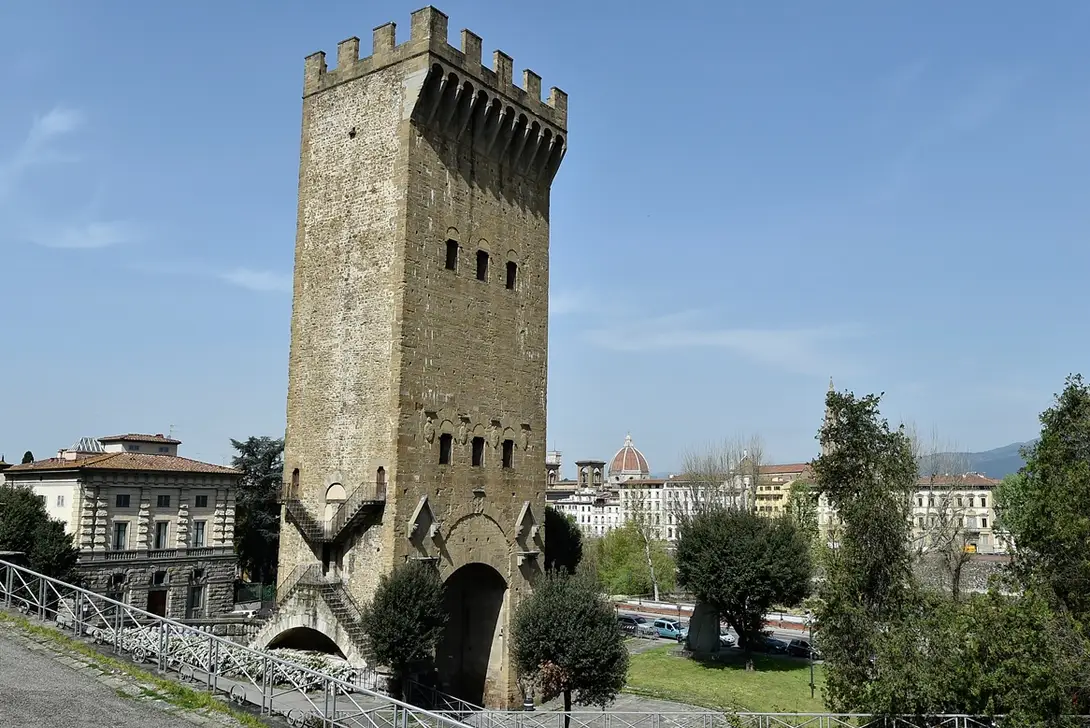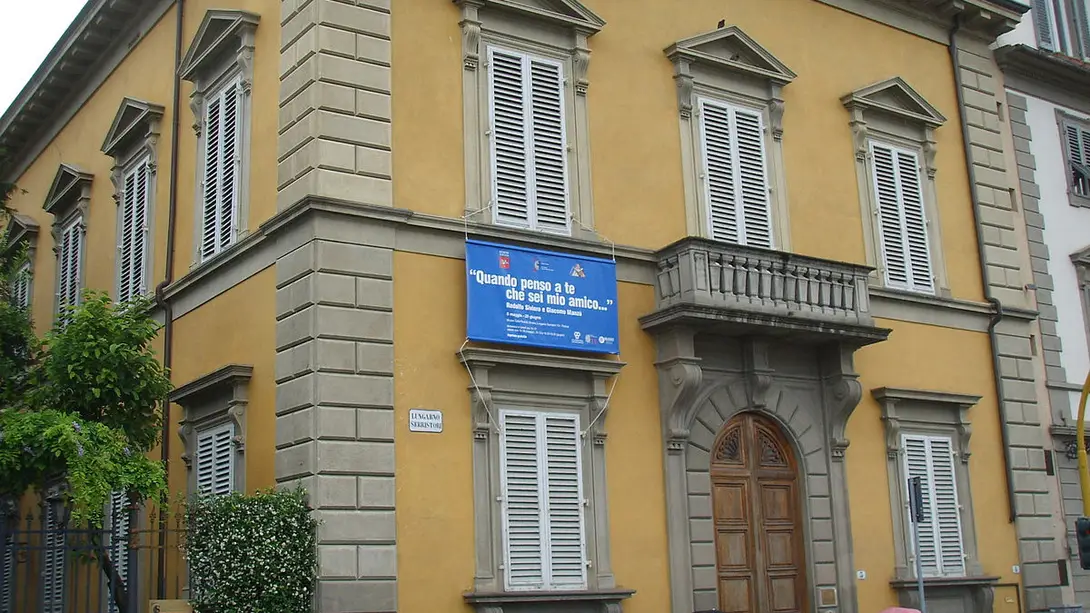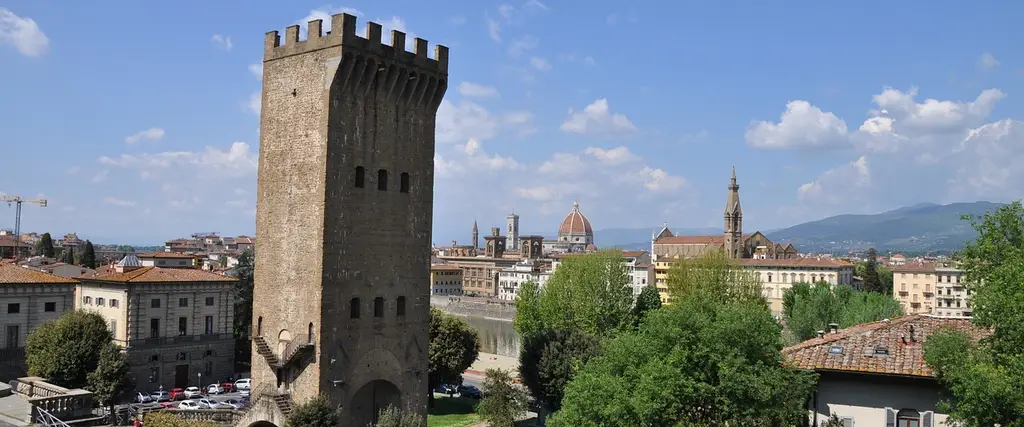
San Niccolò ditrict
Within the large Oltrarno area - approximately in the zone between Ponte Vecchio, the Lungarni up to Piazza Ferrucci, the slopes of Piazzale Michelangelo and Forte Belvedere – you can discover one of the most fascinating neighborhoods of the city: San Niccolò. An area far from mass tourism, to be experienced. Walking along characteristic streets and alleys we will encounter places of great historical and artistic interest, but also numerous artisan shops, as well as various venues (pubs, trattorias and restaurants) that enliven the nightlife.
Very close to Ponte Vecchio, in the direction of Palazzo Pitti, we see the Church of Santa Felicita (inside an absolute masterpiece by Pontormo, mannerist Italian painter), not far from the characteristic Piazza di Santa Maria Soprarno. From here - possible detour along Costa San Giorgio to Forte Belvedere, open only in the summer period - along Via dei Bardi we reach the medieval Piazza de' Mozzi, whose homonymous palace houses one of the most beautiful, but less known, museums in Florence: the Stefano Bardini collection, donated by the famous antique dealer. Nearby you can't miss the Villa Bardini & garden, olverlooking the city. Having returned to via di San Niccolò we encounter the Porta di San Miniato (preserved part of the ancient city walls), leaving which we can go up, along via del Monte alle Croci, until we reach Piazzale Michelangelo and the nearby, splendid Basilica of San Miniato al Monte. Piazzale Michelangelo can also be reached from Piazza Poggi, taking the scenic monumental ramps that wind behind the San Niccolò tower , the only one of the ancient city gates completely preserved.
Few steps away form Piazza Poggi, along the Arno river, on the left side there is the scenic Piazza Demidoff and, on the right, the Casa Siviero Museum, which preserves the numerous works of art recovered after the Second World War by Rodolfo Siviero.
Comune di Firenze
Les lieux
Étapes
Chiesa di Santa Felicita
Santa Felicita is an important church in Florence located in the Oltrarno district a few steps after Ponte Vecchio.
As soon as you enter, on the right (in the Brunelleschi Cappella Capponi), you can admire an absolute masterpiece of Florentine mannerism: the sublime Deposition by Pontormo, to whom the nearby Annunciation (about 1525) is also due. The church also preserves numerous fourteenth-century works. The path of the Vasari Corridor, which "crosses the church", is clearly visible from both inside and outside.
Piazza Santa Maria Soprarno
Piazza Santa Maria Soprarno is a tiny square, named after a church that no longer exists.
One of the oldest parish churches of the Oltrarno, dedicated to Santa Maria and also known as Santa Maria de' Bardi, stood here. It was suppressed in 1785 and demolished in 1869-1870 at the time of Florence, Capital of Italy (1865-1871) for the opening of the new Lungarno Torrigiani.
In the map of Florence outlined by Ferdinando Ruggieri in 1731, the widening appears marked with the name Piazza de' Bardi, as it is located along the route of this street.
The transformations undergone by the square over the last few centuries have been profound. The whole area suffered the destruction of 1944 (destruction wrought by the retreating German Army) and later, during the years of reconstruction, it was decided to create a connection between the piazza and the Costa San Giorgio, by building a wide ramp (rampa delle Coste) at the bottom of the widening.
Forte di Belvedere
The foundation stone of the Forte di San Giorgio, better known as Forte di Belvedere, was laid in1590, whenFerdinand I wasGrand Duke, and it was built to a design by Bernardo Buontalenti.
Besidesdefending the city from a possible outside attack, a role it was never called upon to fulfil, in the event of danger from within it could be reached from Palazzo Pitti via the Boboli Gardens. Breathtaking panoramas from here!
Inside the fort is the elegant Palazzina di Belvedere, which predates the fort and was probably designed by Bartolomeo Ammanati around 1570. The Palazzina becamethe ‘strongroom’ of the Medici,whokept their treasures in the bottom of a well inside the building; anyone who tried to force the locks would trigger a trap that would impale them.
The building is elegant and in a wonderful, panoramic position, it often hosts art exhibitions.
Bardini Garden
The garden is an amalgamation of three different properties that are still clearly discernible: the large central Baroque staircase leading to the Belvedere (from here one of the best panoramas of Florence skyline); the English-style wood and the agricultural section next to the medieval city walls. The properties were reunited only in the 19th century, and following a period of neglect the garden and Villa Manadora were purchased by the antiquarian Stefano Bardini, who restored the complex and embellished the garden with decorative features in the eclectic taste of the late 19th century.
The garden s dominated by the Bardini Villa.
Piazzale Michelangiolo
Piazzale Michelangelo, the most famous panoramic terrace of the Florence...
The works for the construction of the square ended in 1875. The entire square should have become a monument to Michelangelo (in fact, the loggia was originally intended to bring together in a single museum all the statues of the great artist present in Florence). The design of this square, but also of the Viale dei Colli (the Michelangelo-Galileo-Machiavelli avenues which converge here), is due to the architect Giuseppe Poggi, protagonist of the urban transformations of Florence in the second half of the nineteenth century, at the time of Florence Capital of Italy.
Together with the nearby Forte di Belvedere, Piazzale Michelangelo is the panoramic point par excellence over the city: from here you can enjoy a breathtaking view of Florence and its monuments: the Duomo with the dome, Palazzo Vecchio with the Arnolfo tower, the basilica of Santa Croce, the Arno rivers and Ponte Vecchio... until you reach the hills of Fiesole. In the center of the square stands the Monument to Michelangelo, composed of bronze copies of his statues: the four Allegories (Day, Night, Twilight, Aurora) preserved in the old sacristy of the Medici Chapels and the imposing David whose original is today found in Accademy's Gallery.
A few steps from the square overlook the Iris and Rose gardens,the Michelangelo Park while, a little further up, there is one of the most evocative churches in Florence: San Miniato al Monte
It is always from up here that every year, on the evening of June 24th, the traditional Fireworks are exploded: the fireworks display to crown the celebrations of the city's patron saint.
Basilica di San Miniato al Monte
San Miniato al Monte, founded in 1018, is one of the most extraordinary exemples of Romanesque architecture in Tuscany, and stands on the top of a hill overlooking the city, offering a great panorama. The green and white marble facade itnroduces to the interior, which has a mystical atmosphere: the ancient crypt, the inlaid floors of the Basilica and the imposing mosaic in the apse depicting Christ (both 13th century); the Chapel of the Cardinal of Portugal is a Renaissance masterpiece.
Le Rampe - the Ramps
At the end of the 19th century, the construction of the Viale Michelangelo also included the Ramps, which rise from the Arno towards the hill with a consolidation function. This neo-Mannerist architecture was realised by Giuseppe Poggi, who created a succession of staircases, grottoes and water features. From above, the water passes through the first three grottoes, and then flows downwards into five other grottoes until it gathers completely at the large pool of the Porta San Niccolò.
The whole area is also a vertical garden, which is very pleasant, while the water features are highly scenic, especially at night when they are illuminated
Torre San Niccolò
The tower of San Niccolò is in piazza Poggi. The gate, that has been isolated from the city walls, was erected in 1324 to defend the Oltarno quarter. It is the only tower in Florence that has not been “scapitozzata”, that is, lowered with respect to its original height.
It conserves a charming walkway that the Town Council has restored and made safe in order to open it to citizens and tourists. It was part of the fortification system of Florence.
A recommended guided tour for children and teenagers to enjoy a real journey into the past and unveil a new surprising perspective on Florence.
Casa Rodolfo Siviero
Rodolfo Siviero, who succeeded in bringing back to Italy hundreds of masterpieces that had disappeared during the Second World War, bequeathed his home and art collection to the Local Government of Regione Toscana.
Items range from ancient to more modern times: 15th-century wooden statues, gold-ground paintings, small bronzes, terracotta pieces, ancient reliquaries and furniture.
The 20th century also features with works by Giorgio de Chirico, Giacomo Manzù and Pietro Annigoni, all of whom were friends of Siviero.
